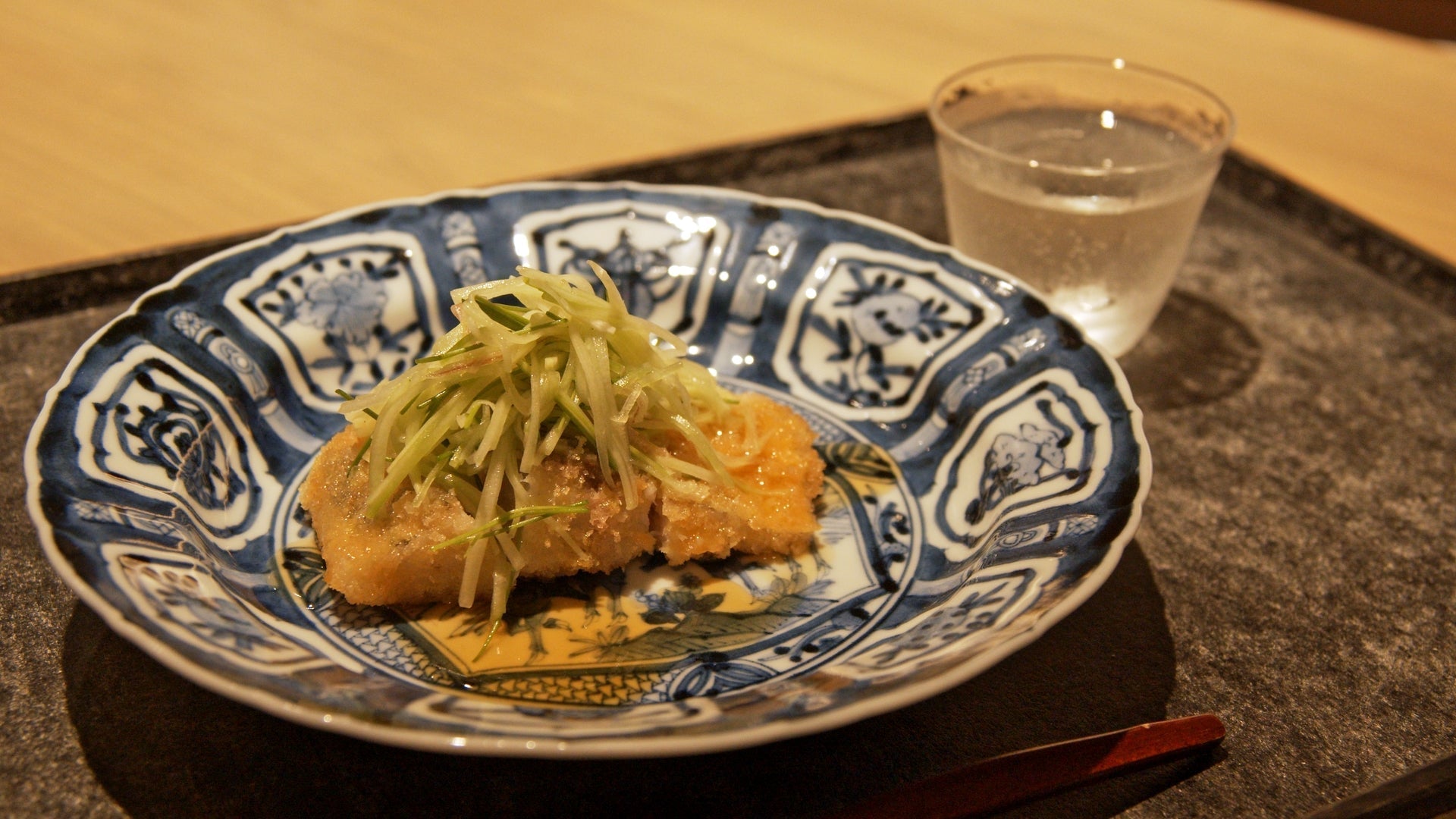
From Kiln to Counter: Myousen Toubou at Shuzen Sameshima
Written by Team MUSUBI
Table of Contents
In the refined realm of Japanese cuisine, the harmony between food and dishware holds significant importance. Kutani ware, originating from Ishikawa Prefecture in the 17th century, is renowned for its rich colors and intricate designs. This exquisite tableware is a staple in high-end Japanese dining establishments.
Team Musubi recently visited Shuzen Sameshima, a distinguished kappo restaurant in Tokyo. The cuisine at this restaurant is served on carefully selected dinnerware, including pieces crafted by the prestigious Kutani ware manufacturer, Myousen Toubou. We delve into the allure of Myousen Toubou's creations through the eyes of a seasoned chef, highlighting the integration of art and gastronomy.
A Symphony of Japanese Cuisine and Sake

Located just a six-minute walk from Oimachi Station, Shuzen Sameshima reopened in March 2022. This Japanese cuisine and sake pairing restaurant is run by Sameshima Taishi and his wife, Tomoyo. Chef Sameshima crafts each dish with care, while Tomoyo, a certified sake sommelier, expertly matches each dish with the perfect sake.

The restaurant's interior exudes a warm, upscale charm and features comfortable counter seating for up to eight guests, making it an ideal setting for business dinners, romantic evenings, or solo dining.

The restaurant takes meticulous care to showcase the inherent appeal of simple ingredients, with a special emphasis on their dashi broth, renowned for its deep umami aftertaste. They also offer a thoughtfully selected range of seasonal junmai sake (sake made using only water, rice, and koji), alongside an assortment of non-alcoholic beverages to ensure that all guests, regardless of their drinking preferences, can fully enjoy their meal.
The Sameshimas explain that they would like people to savor the taste of Japanese sake, enhanced by the cuisine with a special emphasis on dashi.
The Art and Philosophy of Selecting Tableware

When choosing tableware, Chef Sameshima focuses on how a piece will enhance the visual appeal of the cuisine. For professional use, he also considers durability, ease of care, weight, and thickness. When asked about his preferences, he explained that he collects a variety of designs, from painted pieces to plain ones and glassware, aiming for a balanced selection that accentuates the texture of different materials.

He envisions which menu would pair well with each piece he selects. However, the final choice of which to use is made at the time of presentation.
Sharing his philosophy on food presentation, inspired by his mother who also runs a small restaurant, Chef Sameshima said: "My mother’s dishes taste far better than they look. I strive to create a similar experience, where the flavors delight beyond the visual presentation."
Exploring the Elegance of Myousen Toubou's Tableware

Founded in 1975, Myousen Toubou remains committed to traditional techniques passed down from master Kutani potters. The studio creates pieces that are high-quality, durable, and lightweight, all crafted entirely in-house—from clay preparation and mixing glazes to shaping, bisque firing, and overglaze painting.
Artisan Yamamoto Choza, whose works are esteemed by the Imperial Household Agency, skillfully paints each piece. Featuring delicate indigo blue lines on white porcelain, his designs blend traditional motifs and nature themes with a contemporary touch, while also focusing on material, design, size, and usability.

Yamamoto once noted in an interview, "The food is the main character. The plate mustn't speak. The plate cares for the queen, the food, but steps back. And lets the queen shine."
Chef Sameshima first encountered the pottery of Myousen Toubou at an exhibition in Nihonbashi, Tokyo. At that time, while in the process of relocating, he was in search of new plates. Entranced by Yamamoto's live painting demonstration, he immediately acquired two types of plates, each with a different design.
When discussing the appeal of Myousen Toubou’s tableware, Chef Sameshima comments, "Its charm lies in the finesse of each piece. The patterns reveal more intricacies the closer you look."

When asked about the choice of this pairing, Chef Sameshima explained, "The plate has a very detailed design, which I thought would be complemented by a simple dish. My rule is to place only edible items on the plate. This way, once the food is consumed, the beautiful designs of the plate can be fully appreciated."


While Myousen Toubou's tableware is often used in professional settings such as Shuzen Sameshima, Chef Sameshima also recommends using it at home. He shares, "I truly believe that Myousen Toubou's tableware elevates simple dishes. It's ideal for special occasions like New Year's, yet equally suited for daily dining."
Regular use of these dishes adds a touch of elegance to your daily life, enhancing not only the flavor of the food but also its visual appeal. As you continue to use them, you'll find yourself growing more attached, turning them into cherished pieces that you'll treasure for years to come.

Team Musubi's visit to Shuzen Sameshima provided valuable insights into how Myousen Toubou's intricate designs and functional qualities enhance the flavors and enjoyment of Japanese cuisine. Their expert craftsmanship not only elevates the appeal of the ingredients but also ensures a dining experience that guests will remember.
To explore more about how sake is expertly paired with their gourmet omakase menu, read our journal, Discovering the Art of Sake Pairing at Shuzen Sameshima .
Shuzen Sameshima
ooi333 1F, 3 Chome−3−3, Oimachi, Shinagawa City, Tokyo








Leave a comment
This site is protected by hCaptcha and the hCaptcha Privacy Policy and Terms of Service apply.